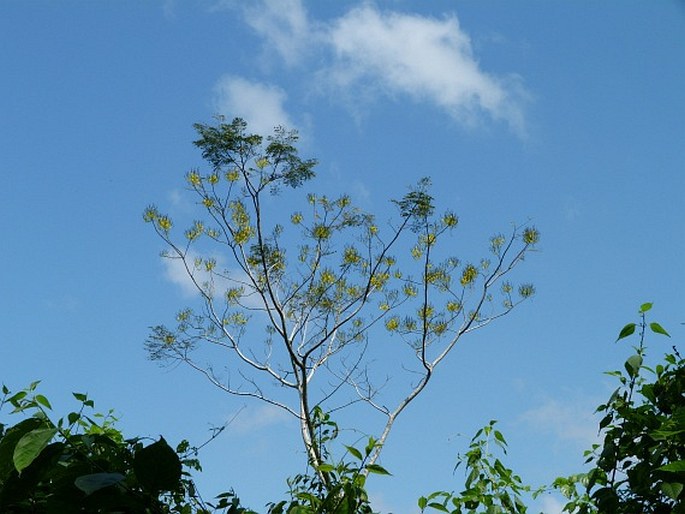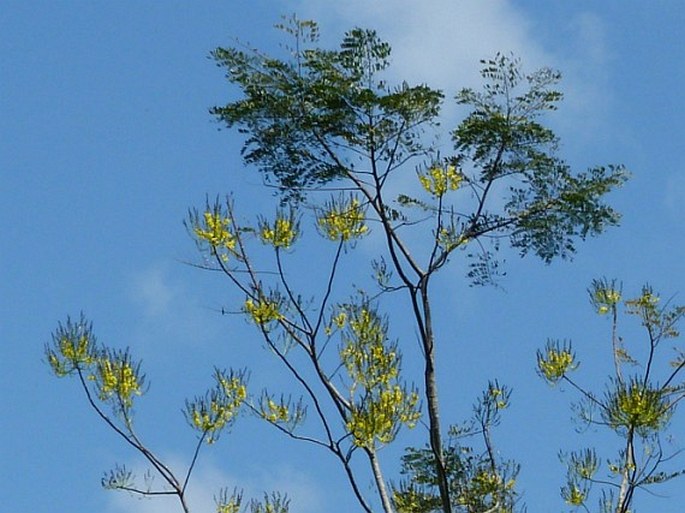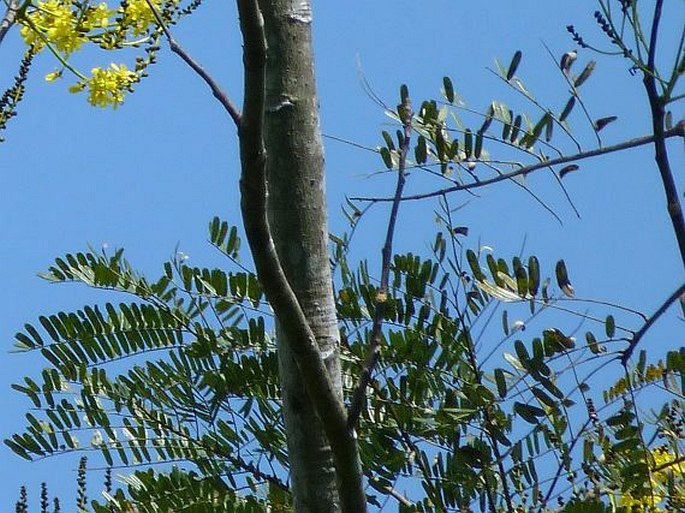Syn.: Caesalpinia parahyba (Vell.) Allem., Cassia parahyba Vell., Schizolobium excelsum Vogel, Schizolobium glutinosum Tul., Schizolobium kellermanii Pittier, Schizolobium parahybum (Vell.) S. F. Blake, orth var.
Family: Fabaceae Lindl.

Distribution: From southern Mexico through Belize, Nicaragua and Panama to Venezuela, Brazil (Amazônia, Mata Atlântica), Peru and Bolivia. It is a probably monotypic genus.
Ecology: It grows in wet to dry, mixed forests, savannas, at elevations up to 900 m asl. It blooms in the dry season, when the leaves have fallen.

Description: Tree, 25–30 m tall, the trunk to 50 cm or more in diameter. Bark greenish gray, the crown broad. Leaves bipinnate, petiole stout, 10 cm long, glabrous or somewhat viscid; leaflets 15–20 pairs or more, oblong or linear-oblong, 1.5–3 cm long, 4–7 mm wide, rounded apically and basally, dark and puberulent to glabrous above, lighter and appressed-pubescent below. Inflorescence racemose, or paniculate of several racemes; bracts lanceolate, scarcely 2 mm long; pedicels up to 1 cm long in age, articulate above the middle. Flowers yellow; calyx-tube turbinate, 2–3 mm long; calyx-lobes ovate-elliptic, about 6 mm long, 3 mm wide, puberulent; petals obovate-spatulate, almost 2 cm long; stamens 10, about as long as the petals. Legume obovate-spatulate, narrowed baseward, about 10 cm long and 2.5–5 cm wide, glabrous.
Use: The wood of this species has been used for box and crate-making, as well as for paper pulp.



These images were taken in Belize, Blue Hole National Park (by Jindřiška Vančurová, February 27, 2015),


